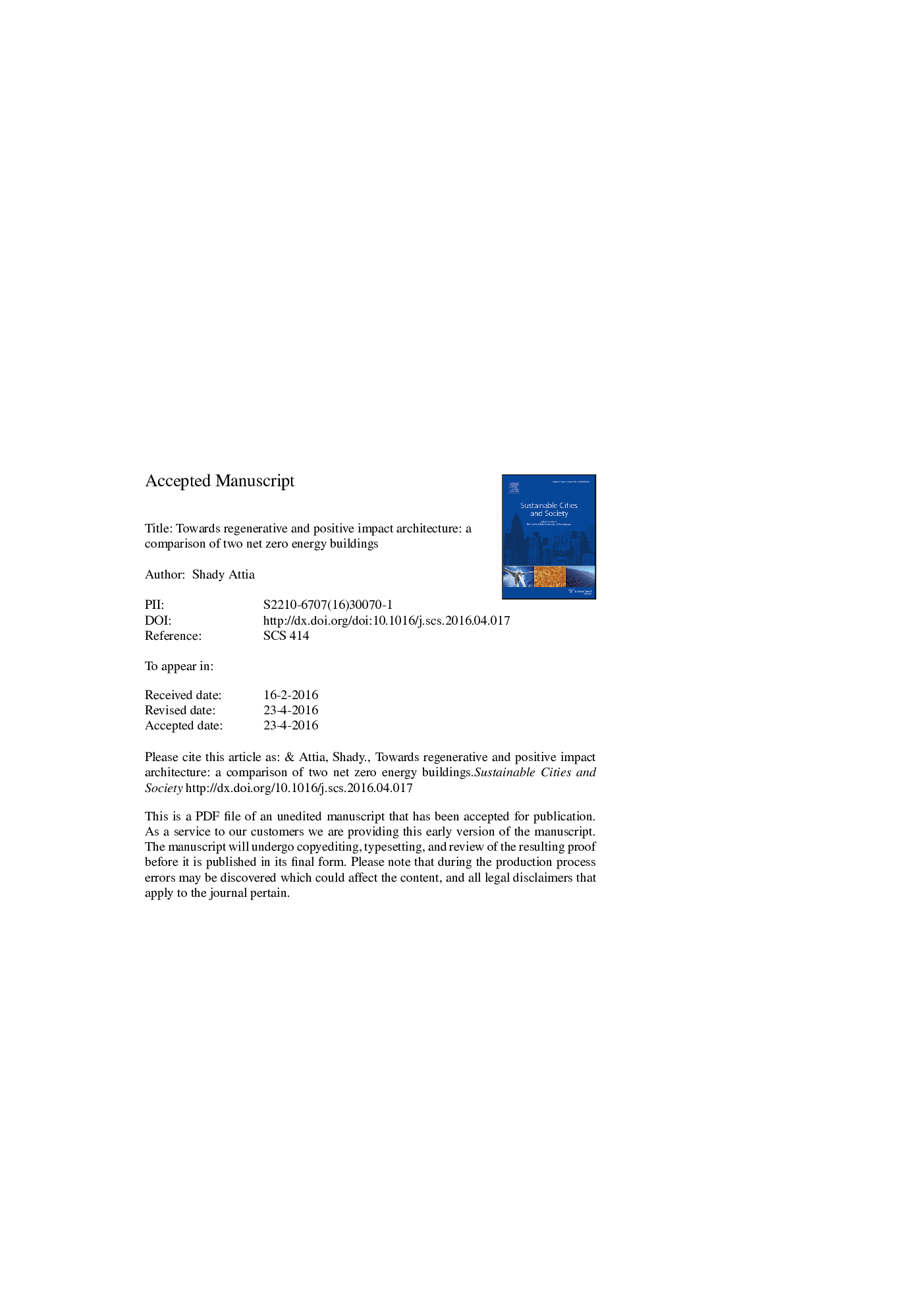| Article ID | Journal | Published Year | Pages | File Type |
|---|---|---|---|---|
| 6775901 | Sustainable Cities and Society | 2016 | 28 Pages |
Abstract
Regenerative design holds great promise for a new era of sustainable and positive impact architecture, sparking considerable interest among architects, building professionals and their clients. However, the translational arm of regenerative design in practice is in a relatively primitive state. Although a number of theoretical definitions and studies have been initiated, the early returns point to several inherent application problems. In this regard, the professional and scientific potential of regenerative architecture can only be fully realized by the identification of the key barriers to projects design, construction and operation. In this paper, we compare two state of the art buildings to address the critical steps in the transition from the negative impact reduction architecture to the positive impact regenerative architecture, utilizing life cycle analysis. The case studies analysis and comparison can serve as an inspiring eye opener and provide a vision for architects and building professionals in the fields of high performance buildings and regenerative architecture.
Keywords
Related Topics
Physical Sciences and Engineering
Energy
Renewable Energy, Sustainability and the Environment
Authors
Shady Attia,
